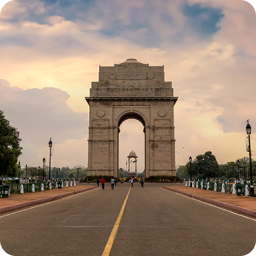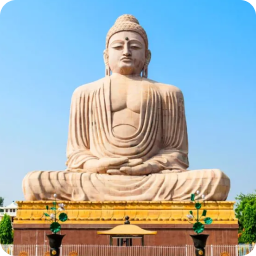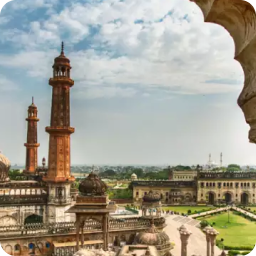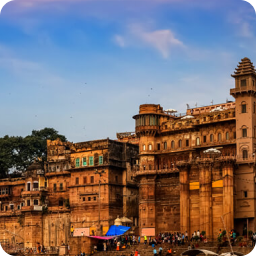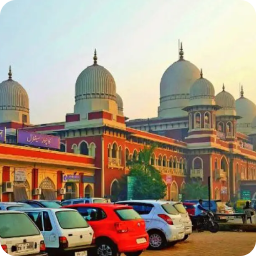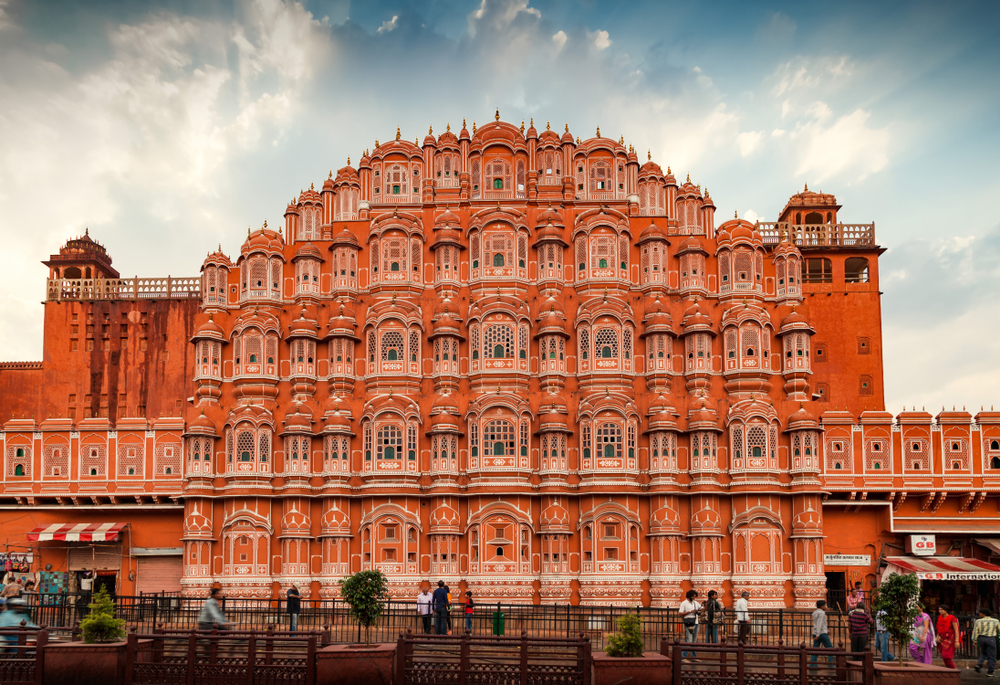Shanghai Cooperation Organization (SCO): Formation and Charter
- Shanghai Cooperation Organization is a permanent intergovernmental international organisation.
- Its creation was announced on 15 June 2001 in Shanghai (China) by the Republic of Kazakhstan, the People’s Republic of China, the Kyrgyz Republic, the Russian Federation, the Republic of Tajikistan, and the Republic of Uzbekistan.
- It was preceded by the Shanghai Five mechanism.
- The Shanghai Cooperation Organisation Charter was signed during the St. Petersburg SCO Heads of State meeting in June 2002, and entered into force on 19 September 2003.
- The Shanghai Cooperation Organization’s official languages are Russian and Chinese.
SCO Member Countries
- SCO comprises eight member states, namely the Republic of India, the Republic of Kazakhstan, the People’s Republic of China, the Kyrgyz Republic, the Islamic Republic of Pakistan, the Russian Federation, the Republic of Tajikistan, and the Republic of Uzbekistan.
- The Islamic Republic of Afghanistan, the Republic of Belarus, the Islamic Republic of Iran and the Republic of Mongolia are the observer states in SCO.
- Shanghai Cooperation Organization has six dialogue partners, viz, the Republic of Azerbaijan, the Republic of Armenia, the Kingdom of Cambodia, the Federal Democratic Republic of Nepal, the Republic of Turkey, and the Democratic Socialist Republic of Sri Lanka.
Goals and Objective of SCO
- Promoting mutual trust and neighborliness.
- Promoting cooperation in politics, trade, economy, research, technology and culture.
- Enhancing ties in areas like education, energy, transport, tourism, environmental protection and healthcare.
- Maintaining and ensuring peace, security and stability in the region.
- Moving towards establishment of democratic, fair and rational international political and economic order.
| SECURE Strategy
S- Security of citizens E– Economic development for all C- Connecting the region U- Uniting our people R- Respect for sovereignty and territorial integrity E- Environmental protection |
SCO Organizational Structure: Governing Bodies and Functions
- Heads of State Council – The supreme Shanghai Cooperation Organization body which decides its internal functioning and its interaction with other States & international organisations, and considers international issues.
- Heads of Government Council – Approves the budget, considers and decides upon issues related economic spheres of interaction within SCO.
- Council of Ministers of Foreign Affairs – Considers issues related to day-to-day activities.
- Regional Anti-Terrorist Structure (RATS) – Established to combat terrorism, separatism and extremism.
- Shanghai Cooperation Organization Secretariat – Based in Beijing to provide informational, analytical & organisational support.
Shanghai Spirit: The Fundamental Principles
- Internal policy based on the principles of mutual trust, mutual benefit, equality, mutual consultations, respect for cultural diversity, and a desire for common development.
- External policy in accordance with the principles of non-alignment, non-targeting any third country, and openness.
Strength
- The Shanghai Cooperation Organization covers 40%of the global population, nearly 20% of the global GDP and 22% of the world’s land mass.
- The SCO has a strategically important role in Asia due to its geographical significance – this enables it to control Central Asia and limit the American influence in the region.
- Shanghai Cooperation Organization is seen as a counterweight to the North Atlantic Treaty Organisation.
SCO RATS:
Regional Anti-Terrorist Structure (RATS) of SCO is a permanent body based in Tashkent, Uzbekistan. The objective of RATS is based upon the Shanghai Convention on Combating Terrorism, Separatism and Extremism. RATS possess information on terrorist organizations and terrorists.
The military exercise ‘Peace Mission 2018’ was conducted in Russia and became the1st platform after UN Peace Mission Peacekeeping Missions for joint military engagement between India and Pakistan.
Operations
- Initially, the SCO focused on mutual intra-regional efforts to curb terrorism, separatism and extremism in Central Asia.
- In 2006, Shanghai Cooperation Organization’s agenda widened to include combatting international drug trafficking as a source of financing globally.
- In 2008, Shanghai Cooperation Organization actively participated in bringing back stability in Afghanistan.
- In 2003, SCO member states signed a 20-year Programme of Multilateral Trade and Economic Cooperation for the establishment of a free trade zone within the territory under the Shanghai Cooperation Organization member states.
How does the West view SCO ?
- The Shanghai Cooperation Organization describes one of its main goals as moving towards the establishment of a democratic, fair and rational new international political and economic order.
- In 2005, the Astana declaration called for SCO countries to work on a “joint SCO response to situations that threaten peace, security and stability in the region”, indicating the group’s strategic ambitions
- As a result, the Shanghai Cooperation Organization was eyed with some misgivings by the U.S. and Europe. It was even dubbed the “Anti-NATO” for proposing military cooperation.
- Western and NATO concerns were heightened when they placed heavy sanctions against Russia for its actions in Crimea, but China came to Russia’s aid, signing a 30-year, $400 billion gas pipeline framework agreement.
India’s Active Engagement at SCO Bishkek Summit 2019
- Marked the second year in which India participated as a full member.
- Honorable Prime Minister Narendra Modi in his address to the SCO leaders presented his vision for the organization in the form of Health(healthcare cooperation, economic cooperation, alternate energy, literature and culture, terrorism-free society and humanitarian cooperation).
- He called upon member states to ensure that nations which support, promote or finance terror must be held accountable – referring to Pakistan without explicitly naming it.
- India refused to join the clause in the declaration in support of the Belt and Road Initiative, while all the other Shanghai Cooperation Organization members ‘reaffirmed their support’ for the Chinese initiative.
- The declaration called for ‘consistent implementation’ of the Joint Comprehensive Plan of Action (Iran nuclear deal) and asked all participants ‘for comprehensive and effective implementation of the document,’ a year after the US pulled out of it.
- The ‘Roadmap for Further Action of the Shanghai Cooperation Organization Afghanistan Contact Group’ was signed by the leaders.
- The Indian position of an ‘Afghan-led, Afghan-owned and Afghan-controlled inclusive peace process’ was similarly highlighted by the prime minister.
- The Russian leader invited Modi to be the chief guest at the Eastern Economic Forum in Vladivostok in September, which would also see the annual bilateral summit being held alongside the same.
- The India-China bilateral, coming after the successful listing of Masood Azhar as a global terrorist, led to the decision to expedite border talks and plans to mark the 70th anniversary of establishment of diplomatic relations.
- Addressing the first India-Kyrgyzstan Business Forum, the Prime minister emphasised on better connectivity as being crucial for better trade ties. The two countries signed the Double Taxation Avoidance Agreement As talks continue on the preferential trade agreement with the Eurasian Economic Union (EAEU).
SCO Importance for India
- The full membership of the SCO will provide India greater visibility in the affairs of the Eurasian region which is strategically important for India.
- Central Asia is a part of India’s Extended Neighbourhood – Shanghai Cooperation Organization provides India an opportunity to pursue the “Connect Central Asian Policy”.
- Helps India fulfill its aspiration of playing an active role in its extended neighbourhood as well as checking the ever growing influence of China in Eurasia.
- It will enable India, as an integral part of the Eurasian security grouping, to neutralise centrifugal forces arising from religious extremism and terrorism in the region.
- It will help India in managing much more effectively the negative impact of a Taliban’s Afghanistan, especially in the post-2014 scenario.
- India through RATS can improve its counterterrorism abilities by working toward intelligence sharing, law enforcement and developing best practices and technologies.
- Through the SCO, India can also work on anti-drug trafficking and small arms proliferation.
- Cooperation on common challenges of terrorism and radicalisation.
- It will provide India with a forum where it can constructively engage both China and Pakistan in a regional context and project India’s security interests in the turbulent regional swathe— including West Asia.
- India being an energy deficient country with increasing demands for energy, SCO provides it with an opportunity to meet its energy requirements through regional diplomacy.
- Talks on the construction of stalled pipelines like the TAPI (Turkmenistan-Afghanistan-Pakistan-India) pipeline; IPI (Iran-Pakistan-India) pipeline can get a much needed push through the SCO.
- Shanghai Cooperation Organization provides direct access to Central Asia – overcoming the main hindrance in flourishing of trade between India and Central Asia.
- SCO acts as an alternative route to Central Asia.
- Central Asian countries provide India with a market for its IT, telecommunications, banking, finance and pharmaceutical industries.
Challenges for SCO membership for India
- India joining the SCO has been seen as a puzzling foreign policy move, as it has come at a time when New Delhi is looking more keenly at the West, and in particular at the maritime ‘Quadrilateral’ with the S., Japan and Australia.
- Since 2014, India and Pakistan have cut all ties, talks and trade with each other, and India has refused to attend the SAARC summit due to tensions with Pakistan, but both their leaderships have consistently attended all meetings of the SCO.
- Despite the fact that India accuses Pakistan of perpetrating cross-border terrorism at every other multilateral forum, at the SCO, Indian and Pakistani armed forces even take part in military and anti-terrorism exercises together.
- India has again refused to endorse the BRI project. Without its participation the success of the project cannot be ensured. All other countries have endorsed BRI, thus it’s interesting to see how long India can sustain its stand on BRI.
- India is seated in that where India’s relations with countries like Pakistan, China and Russia have been heightened in recent times. It will be challenging for India to balance the new nexus between China-Pakistan-Russia and its approach towards the West.
SCO deal with bilateral tensions
- The SCO Charter doesn’t allow any bilateral dispute to be taken up, but it provides a comfortable platform for finding common ground and eventually, creating conditions for dialogue between countries.
- In 2009, India and Pakistan held the first talks after the Mumbai attacks on the side-lines of the SCO summit in Astana, where then Prime Minister Manmohan Singh and former Pakistani President Asif Ali Zardari met and tried to resolve tension through talks.
- In 2015, Prime Minister Narendra Modi met then Pakistani PM Nawaz Sharif at the SCO summit in Ufa, for a meeting that even resulted in a joint statement.
- In 2020, SCO host, Russia, encouraged and facilitated meetings between India and China to discuss the stand-off at the LAC.
SCO: Way Forward
- SCO provides a very good opportunity to India to connect with the leadership of Central Asian countries and that is a very big take away.
- India has a good record of economic growth and handling problems which is a problem of other countries which lays foundation to huge foreign investment.
- The SCO which had started with a group of five members has expanded and included India and Pakistan in 2017. Its goals and objectives have also widened from security to economy and other areas.
- For India, it is a very good opportunity to boost its ties with Central Asian countries.






